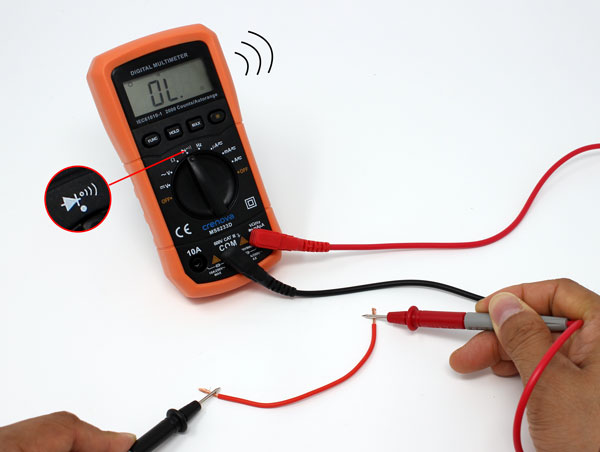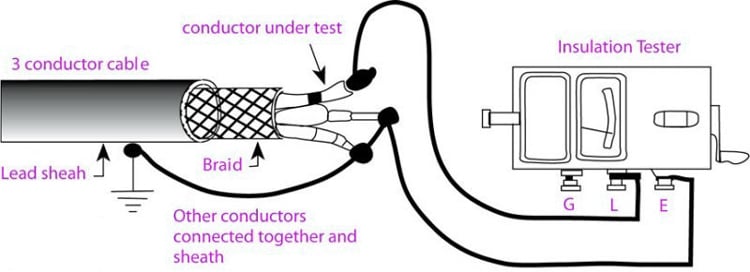Introduction:
Dependability and safety are essential components of electrical systems. These
systems rely on cables to power homes, drive industrial equipment, and offer
communication linkages. Comprehensive cable testing is required to ensure that
the system functions properly and safely. This guide delves into the techniques
and importance of cable testing, highlighting key practices for system
integrity.
Importance of Cable Testing
Safety first: Faulty wiring can cause electrical fires or equipment damage.
Regular electrical cable testing helps to identify faults, ensuring the safety
of people and property.
Reliability is essential in critical environments such as hospitals. Cable
testing detects flaws, assuring continuous operation.
Compliance and Standards: Adherence to IEC and IEEE standards for cable safety
and performance is critical for legal and quality assurance.
Cost Savings: Preventive maintenance through cable testing saves costs by
minimizing downtime and repairs.
Methods of Cable Testing:
Visual Inspection:
- Examine the cables thoroughly for any physical damage, such as cuts, abrasions, or corrosion.
- Look for signs of wear, including frayed insulation or exposed conductors.
Continuity Testing:
- Connect one lead of the multimeter to one end of the conductor path and the other lead to the opposite end.
- Set the multimeter to continuity mode.
- If the circuit is continuous (no breaks), the multimeter will emit a beep or show a low resistance reading.
- Repeat this process for each conductor in the cable
Insulation Resistance Testing:
- Disconnect power from the cable under test.
- Connect one lead of the insulation resistance tester to the conductor or conductors being tested and the other lead to the ground.
- Apply a voltage (typically specified in the test standard or procedure) and measure the insulation resistance.
- Interpret the reading to ensure it meets safety standards, usually specified in ohms or megaohms.
Dielectric Testing:
- Disconnect power from the cable.
- Apply a high voltage (often specified in the test standard or procedure) between the conductors and/or between conductors and ground.
- Monitor for any breakdown or flashover.
- Record the voltage at which breakdown occurs.
Impedance Testing:
- Apply a known test signal (typically a specific frequency) to one end of the cable.
- Measure the voltage and current at the same end.
- Calculate impedance using Ohm's Law or specialized impedance formulas.
Formula:
Impedance (Z) = Voltage (V) / Current (I)
Cable Fault Location:
Time Domain Reflectometry (TDR):
Connect the TDR device to one end of the cable.
- Send a test pulse down the cable and measure the time it takes for reflections to return.
- Analyze the waveform displayed on the TDR screen to identify faults like breaks, shorts, or impedance mismatches.
- Formula:
- Distance to Fault = (Propagation Velocity) x (Time to Fault)
- Procedure:
- Apply a high voltage to the cable.
- Monitor for partial discharges, which indicate localized insulation degradation.
- Use directional couplers and PD detectors to pinpoint the location of discharge activity.
Environmental Testing:
- Subject the cable to extreme temperatures, ranging from high heat to freezing conditions.
- Expose the cable to varying humidity levels.
- Monitor the cable's performance under these conditions for any signs of degradation or failure.
Network Analyzer Testing:
- Connect the network analyzer to the cable under test.
- Measure parameters like insertion loss, return loss, and crosstalk.
- Analyze the frequency response and impedance characteristics of the cable.
Dynamic Testing:
- Apply varying loads or stresses to the cable, simulating real-world conditions.
- Monitor the cable's response to different loads, such as tension, compression, or bending.
- Assess performance metrics like signal integrity and mechanical durability.
Certification Testing:
- Submit the cable samples to accredited laboratories for testing.
- Perform a series of standardized tests based on industry-specific standards (e.g., ANSI/TIA, ISO/IEC).
- Ensure compliance with parameters such as electrical performance, mechanical strength, and safety requirements.
Cable testing employs these techniques to ensure electrical and communication networks' integrity, safety, and performance. It is a proactive
strategy that safeguards against potential hazards while also boosting system
dependability and efficiency, making it a must-have practice for any firm that
relies on cables.
Conclusion:
Cable testing is an important step in ensuring the safety and
dependability of electrical systems. We can ensure that our cables fulfill the
highest quality and safety criteria by doing visual inspections, continuity
checks, and complying to IEC and IEEE standards.
By incorporating these cable testing methods into regular maintenance routines,
industries can prevent failures, ensure compliance, and save on costs, all
while upholding the integrity of their electrical systems.







.jpeg)

0 Comments